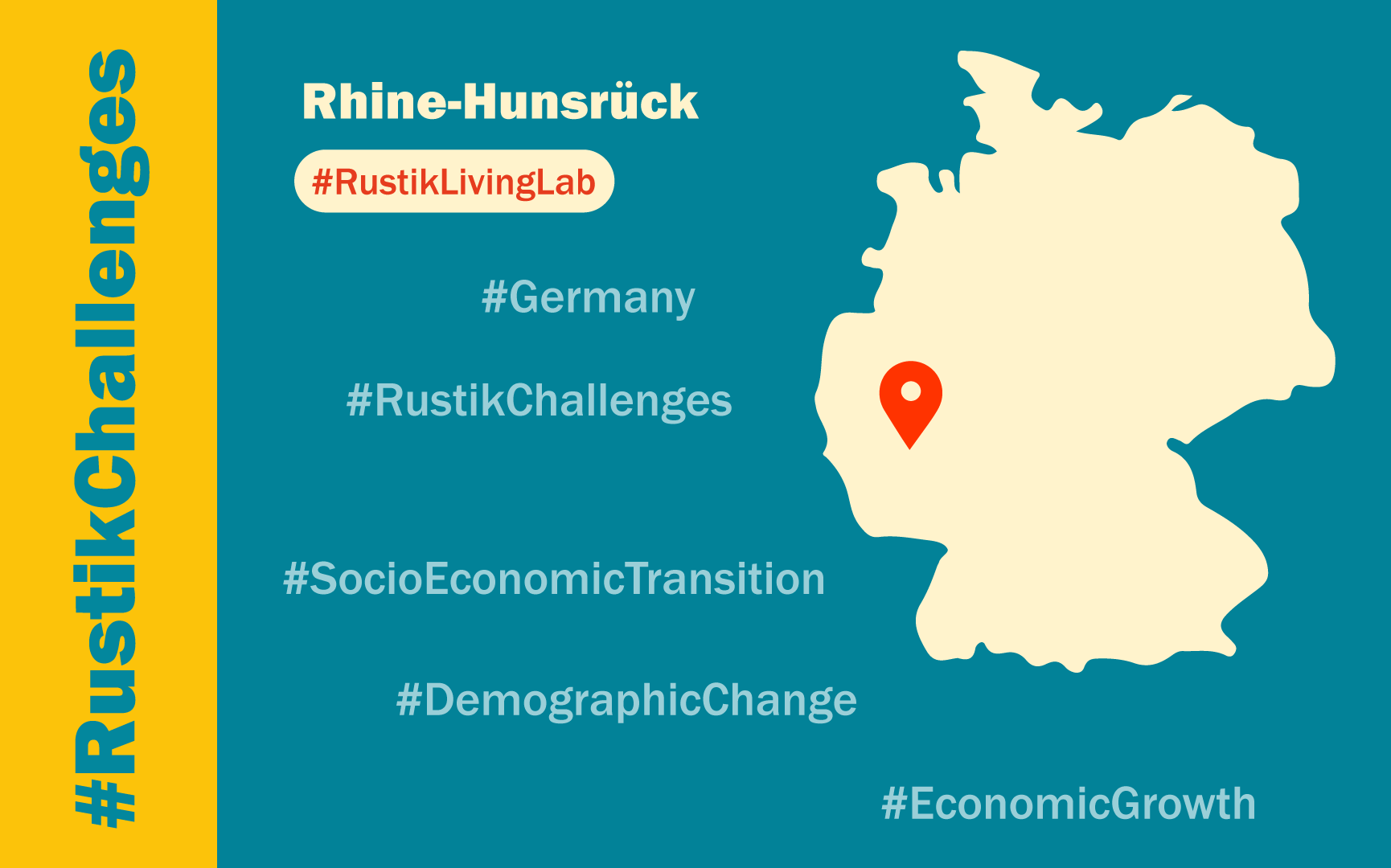Embarking on a journey into the heart of Germany, the Rhein-Hunsrück region emerges as a captivating landscape of both challenges and potential. Nestled in the state of Rhineland-Palatinate, this predominantly rural district stands at the forefront of socio-economic and demographic transitions, navigating complexities in the face of an ageing population and a shifting employment landscape. With a keen focus on addressing these challenges, the Rhein-Hunsrück region is looking for solutions trough is participation in the RUSTIK project.
The collaboration between the Institute for Regional Development and Structural Planning (IFLs) and the Regionalrat Wirtschaft Wirtschaftsförderung, which oversees regional economic development, aims to unravel the intricacies of socio-economic transition processes, offering a unique perspective shaped by the region’s economic development efforts and an extensive network of stakeholders. Join us as we delve into the dynamics of Rhein-Hunsrück, where the journey towards sustainable change unfolds against the backdrop of demographic shifts and the pursuit of a more vibrant, attractive future for both businesses and the emerging workforce.
Key District Statistics:
- Area: 99,107 hectares
- Population Density: 107.3 inhabitants/km²
- Population: 64,568 enterprises
- Majority: Nearly 4,430 small and very small businesses (fewer than 50 employees)
- Larger Businesses: Only 21 with more than 250 employees
Transition Focus: Socio-economic and Demographic Challenges:
Facing socio-economic and demographic challenges, Rhein-Hunsrück experiences a shortage of skilled workers across various industries, with unfilled training and apprenticeship positions. The region, while economically sound, struggles to attract and retain a diverse workforce.
Living Lab Challenge: Bridging Gaps in Talent and Job Opportunities
Within the Rhein-Hunsrück region, the pivotal challenge focuses on addressing the mismatch between job opportunities and the skilled workforce. Despite the region’s favorable economic standing, there’s a shortage of skilled workers across various industries, with unfilled training and apprenticeship positions adding to the complexity. The challenge also extends to essential services, particularly in medical and nursing care, raising concerns about the region’s ability to attract and retain talent. This Living Lab endeavors to analyze this “mismatching problem” comprehensively, aiming to understand the specific needs and aspirations of both local small and medium-sized enterprises (SMEs) and diverse groups of young individuals. By exploring innovative solutions, the Living Lab seeks to strengthen connections, foster collaboration, and initiate new networks to overcome these challenges.
Rationale and Policy Relevance:
As a crucial link between economic development and creating an attractive living and working environment, the Living Lab addresses challenges identified through discussions with local stakeholders. The project aligns with state-level strategies for skilled workers and demographic change, recognizing the need for holistic solutions.
Research Questions and Emerging Data Needs:
The Living Lab seeks to answer questions about challenges faced by SMEs in filling training and job vacancies, the requirements of young people in the region, and how new data can improve the match between supply and demand. Emerging data needs include detailed insights from both enterprises and young people.
Data Availability and Limitations:
While statistical data on apprenticeships, job openings, and demographic information is available, limitations exist in linking this data at the NUTS 3 level. The challenge lies in obtaining accurate information about job seekers and apprenticeship seekers, as not all positions are reported to employment agencies.
The Living Lab Rhein-Hunsrück represents a proactive effort to bridge the gap between available opportunities and the potential workforce, ensuring a sustainable and vibrant future for the region.

